 Time to define my terms again!
Time to define my terms again!
This is undoubtedly the most subjective of all my lists. Basically, what I’m saying with it, is that picture books are far more wide-ranging than many people suspect. If you say “picture book” they’ll imagine something for a 4-year-old. Nothing wrong with picture books for 4-year-olds, of course, but picture books hit a great swath of ages and intellects. Some really aren’t for little kids.
This timing on this one is pretty interesting as well. Just yesterday one of my co-workers spoke with me about a picture book that she thought didn’t have a young enough text to be placed in the picture book section. That book actually isn’t on this list (I disagreed with the assessment) but it reminded me that we think of picture books in very specific terms. I’m hoping to break those terms down a bit. Here then are my favorite picture books for older child readers in 2016:
Older Picture Books of 2016
Cry, Heart, But Never Break by Glenn Ringtved, ill. By Charlotte Pardi
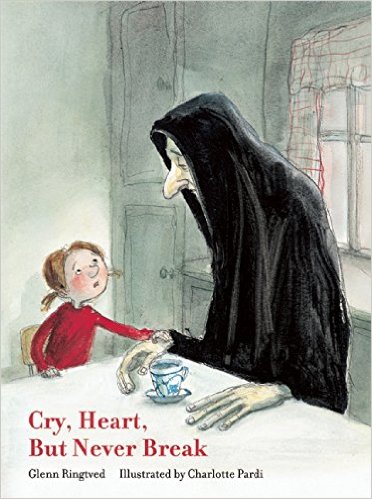
I do wonder if it’s a particularly American instinct to recommend this book of gentle death doing his job to older kids. It’s entirely possible that it its native Denmark this book is given to three-year-olds regularly. It’s all about the cultural construction, isn’t it? By the way – this marks the third time this book has appeared on one of my lists. That may be a record for this series (here are lists one and two).
Ideas Are All Around by Philip C. Stead

Ah ha! It took a while but eventually this book ended up on this list! I truly do feel that of all the picture books of this year, this is the most divisive. People who love it, adore it. People who dislike it, loathe it. Me? I like it. But I do feel it’s meant for older kids, and maybe even teens. A quiet, contemplative, fascinating work.
Kiviuq and the Mermaids by Noel McDermott, ill. Toma Feizo Gas
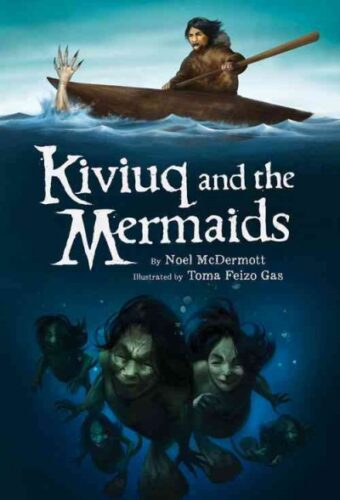
With a name like that, you’d be forgiven for at first thinking it’s some ootsy cutesy mermaid tale. It ain’t. The mermaids in this book are utterly grotesque and fascinating. They play with poor Kiviuq like cats with mice, and I love how the whole trouble begins because of a young one at the story’s start. Mermaid horror for Goosebumps-loving kids.
Lucy by Randy Cecil

Aww. I still haven’t decided if I should put this book on my early chapter list or not. Ultimately I don’t think I will, but it’s not exactly your average picture book either. This tale of a little dog that lost her loving home and is on the cusp of entering another is quiet and sweet and just right for the kid willing to wait it out.
Missing Nimama by Melanie Florence, ill. Francois Thisdale
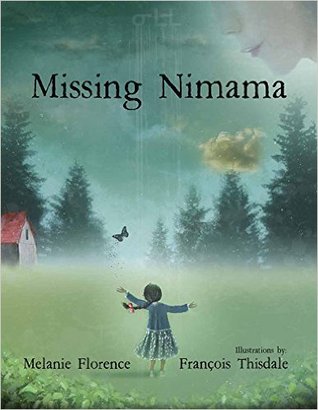
As an American I am ashamed to admit that I was completely unaware of the fact that a great many indigenous women and girls have been going missing for a number of years in Canada. You can read an interview with Melanie Florence and Francois Thisdale about the situation and how they’ve brought it to light with this book. In the story, a Cree girl must grow up without her mother, and the author goes through the years and the simple fact of how hard it is to move on when you just don’t know what has happened.
The Riddlemaster by Kevin Crossley-Holland, ill. Stephane Jorisch

Do you remember Crossley-Holland’s Arthur trilogy from a decade or two back? It was quite the big deal when I started working as a children’s librarian, though it’s faded from the public consciousness quite a bit since then. I was thrilled to find some smart editor had paired the author with the urbane and delightful Stephane Jorisch. There’s an undercurrent of fear to The Riddlemaster, but I loved the old-fashioned riddling of it all. It’s also a beauty to look at.
Rules of the House by Mac Barnett, ill. Matt Myers
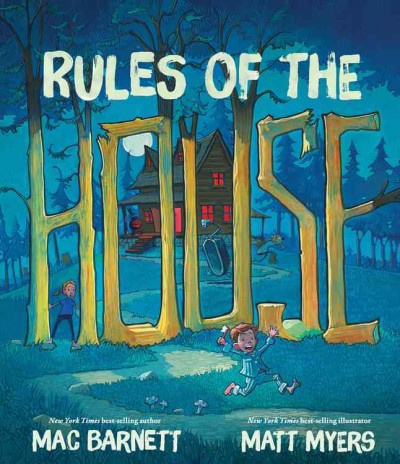
And speaking of undercurrents of fear! I was a bit surprised to find that Mac and Matt’s latest is as scary as it is. It gets its spooks legitimately, though. When someone tells you not to go through a certain door, don’t do it! Did Bluebeard teach us nothing?
Why Am I Here? by Constance Orbeck-Nilssen, ill. Akin Duzakin

You know, some years you get just a ton of philosophical picture books. Other years the numbers decrease a bit. I love the dreamy quality of this book and the big questions it’s unafraid to ask. I just don’t have any answers for it.
Interested in the other lists of the month? Here’s the schedule so that you can keep checking back:
December 1 – Board Books
December 2 – Board Book Adaptations
December 3 – Nursery Rhymes
December 4 – Picture Book Readalouds
December 5 – Rhyming Picture Books
December 6 – Alphabet Books
December 7 – Funny Picture Books
December 8 – Calde-Nots
December 9 – Picture Book Reprints
December 10 – Math Picture Books
December 11 – Bilingual Books
December 12 – International Imports
December 13 – Books with a Message
December 14 – Fabulous Photography
December 15 – Fairy Tales / Folktales
December 16 – Oddest Books of the Year
December 17 – Older Picture Books
December 18 – Easy Books
December 19 – Early Chapter Books
December 20 – Graphic Novels
December 21 – Poetry
December 22 – Fictionalized Nonfiction
December 23 – American History
December 24 – Science & Nature Books
December 25 – Transcendent Holiday Titles
December 26 – Unique Biographies
December 27 – Nonfiction Picture Books
December 28 – Nonfiction Chapter Books
December 29 – Novel Reprints
December 30 – Novels
December 31 – Picture Books

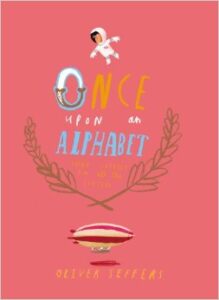 Once Upon an Alphabet: Short Stories for All the Letters
Once Upon an Alphabet: Short Stories for All the Letters
By Oliver Jeffers
Philomel (an imprint of Penguin)
$26.99
ISBN: 978-0-399-16791-1
Ages 6 and up
On shelves now
Beware ever becoming a brand, my sweet, for that way lies nothing but unhappiness and ruin. Or not. I think the only real and true problem with becoming extremely popular in your field is that you have to battle on some level the ridiculous expectations others set for you. You did “X” and “X” was popular? Make another “X”! Creativity is haphazard and in the children’s book biz even the most popular illustrators do jobs that simply pay the bills. Such is NOT the case with Oliver Jeffers’ Once Upon an Alphabet. I have seen Jeffers do books that were merely okay and some that didn’t quite pass muster. I have also seen him be consistently brilliant with a style that is often copied, whether artistically or in tone. Yet in his latest book he does something that I honestly haven’t really seen before. Each letter of the alphabet is worthy of a story of its own. Each one distinct, each one unique, and all of them pretty much hilarious. No other author or illustrator could do what Jeffers has done here or, if they did, the tone would be entirely off. Here we have an abecedarian treat for older children (at least 6 years of age, I’d say) that will extend beyond Jeffers’ already gung-ho fan base and garner him new devotees of both the child and adult persuasion.
“If words make up stories, and letters make up words, then stories are made of letters. In this menagerie we have stories, made of words, made for all the letters.” So begins Once Upon an Alphabet, a book that seeks to give each letter its due. The tales told vary in length and topic. For example, “A” is about Edmund the astronaut who wants to go on an “adventure” and meet some “aliens” “although” there’s a problem. “Space was about three hundred and twenty-eight thousand, four hundred and sixteen feet above him . . . and Edmund had a fear of heights.” Many of the stories seen here rely on a twist at their conclusion. Danger Delilah may laugh in the face of Death but she’ll book it double time when her dad calls her for dinner. And then there’s Victor, plugging away on his vengeance. Told with wit and humor these tales are each and every one consistently amusing and enjoyable.
One thing that sets Jeffers apart from the pack is his deft wordplay. He has always been as comfortable as a writer as he is an illustrator or artist. Examining the tales I saw that some of the stories rhyme and others do not. This could potentially be off-putting but since each letter stands on its own I wasn’t bothered by the choice. The book could also be a very nice writing prompt title, not too dissimilar from Chris Van Allsburg’s The Mysteries of Harris Burdick. Once kids get the gist of what Jeffers is doing here they could be encouraged to write their own letter-inspired tales.
As for the art, it’s recognizably Jeffers, but with a twist. A close examination of the book shows that Jeffers changes up his artistic style quite a bit. While I’d say all his art is recognizably Jeffersish, his choices are fascinating. What determines whether or not a character gets a nose? Why is the terrified typist of “t” made so realistic while Ferdinand of “F” is done in a more cartoony style? Then there’s the use of color. Generally speaking the book is black and white but is shot through with different colors to make different points.
You also begin to read more into the illustrations than might actually be there. When the elephant dutifully eats nearly nine thousand envelopes in answer to a riddle, he is directed to do so by a nun who is keeping score. Adults will see this and wonder if it’s the equivalent of that old riddle about how many angels will dance on the head of a pin. I know the nun is there because the letter is “N” but that doesn’t stop me from seeing a connection. Other times there are connections between letters that aren’t explicitly mentioned but that will amuse kids. The owl and octopus that search and correct problems fix the cup that made an unseemly break (literally) for freedom at the letter “C” only for it to break again around the letter “T”. Then there are the back endpapers, which manage to wrap up a number of the stories in the book so subtly you might not even realize that they do so. See the frog hit on the head with a coin? That’s the ending to the “F” tale. And a closer reading shows that each person on the back endpapers correlates to their letter so you can read the alphabet found on the front endpapers through them. Pretty slick stuff!
I guess the only real correlation to this book is Edward Gorey’s Gashlycrumb Tinies alphabet. Even if the name sounds familiar I’m sure you’ve heard it. “A is for Amy who fell down the stairs. B is for Basil assaulted by bears.” I’ve often thought that Jeffers’ sense of humor owes much to Gorey’s. You see it in letters like “H” which features a woman falling off a cliff or “T” where an author meets an untimely end at the hands (or, more likely, mouth) of a monster. And like Gorey, Jeffers is capable of giving potentially gruesome and macabre poems an almost sweet edge. Gorey’s stories dealt well in funny melancholy. Jeffers, in contrast, in a form of humor that turns tragedy on its head.
From what I can tell the book is pretty universally loved. That said, it is not without its detractors. People who expect this to be another alphabet book for young children are bound to be disappointed. No one ever said alphabet books couldn’t be for older kids as well, y’know. And then there’s one criticism that some librarians of my acquaintance lobbed in the direction of this book. According to them some letter stories were stronger than others. So I read and reread the book to try and figure out which letters they might mean. I’m still rereading it now and I’m no closer to finding the answer. Did they not like the daft parsnip? The missing question? The monkeys that move underground? I remain baffled.
Or maybe I just like the book because it ends with a zeppelin. That could also be true. I really like zeppelins. I am of the opinion that 90% of the picture books produced today would be greatly improved if their authors worked in a zeppelin in some way. Heck, it’s even on the cover of the book! But if I’m going to be perfectly honest with you, I suspect that even if you removed every last zeppelin from Once Upon an Alphabet I’d still like the puppy. A lot. A lot a lot. You see Jeffers knows how to use his boundless cleverness for good instead of evil. This book could be intolerable in its smarts, but instead it’s an honestly amusing and tightly constructed little bit of delving into the alphabet genre. It remains aware from start to finish that its audience is children and by using big long fancy dance words, it never talks down to kids while still acknowledging the things that they would find funny. All told, it’s a pip. No picture book alphabet collection will be complete without it.
Like This? Then Try:

 Time to define my terms again!
Time to define my terms again!











I am consistently impressed by Mr. Jeffers. He’s prolific, talented, and a keen businessman. Wish we could see some interior spreads! But I’ll wait to see the actual book. And hello to you Betsy! Long time no talk!
I’m battling a lovely illness that may account for occasional flights of fancy and lack of links/images in review posts. However, I’m happy to report that Jules Danielson suffered no such weaknesses and did a magnificent inside look at the book here: http://blaine.org/sevenimpossiblethings/?p=3546